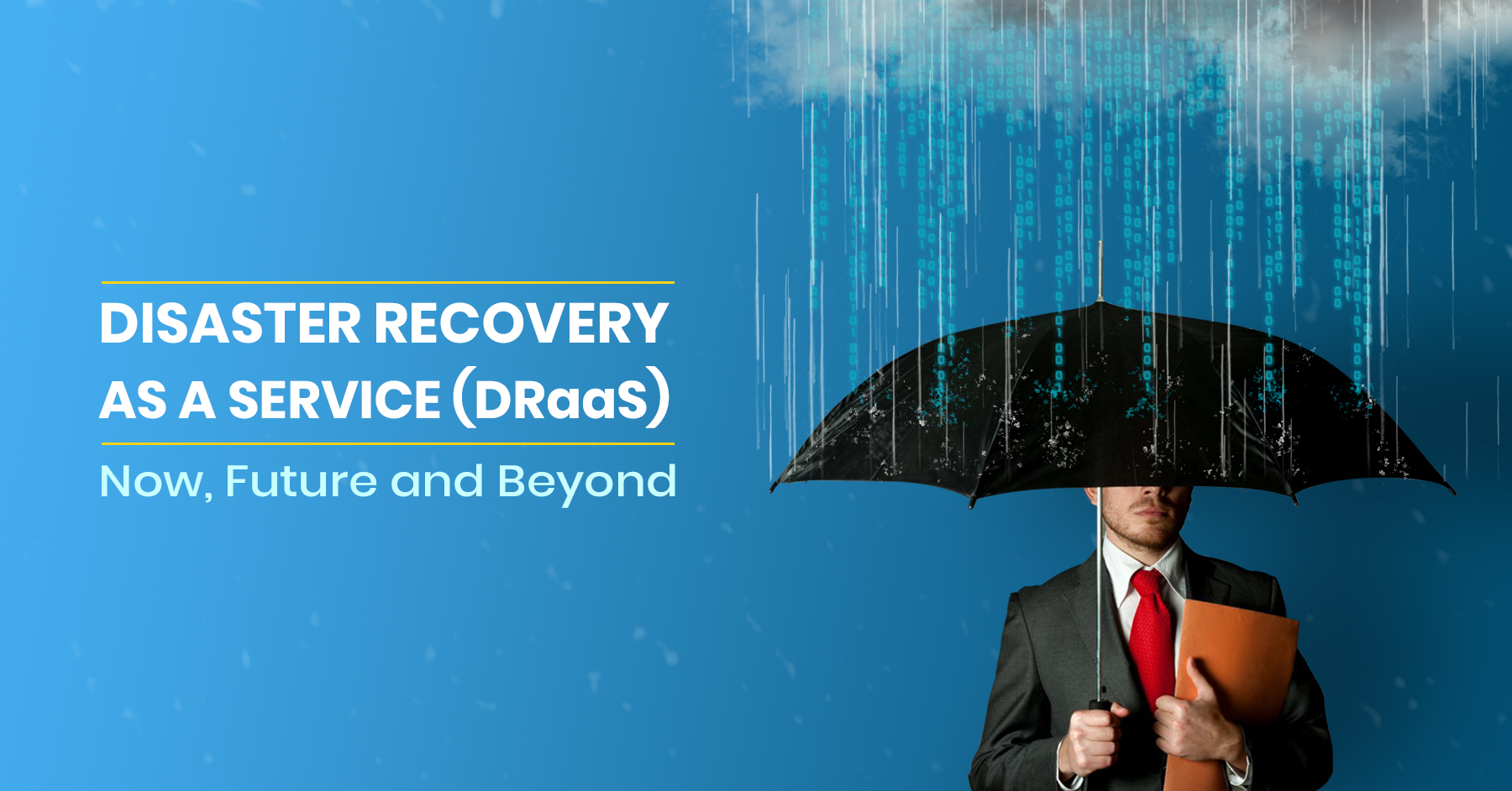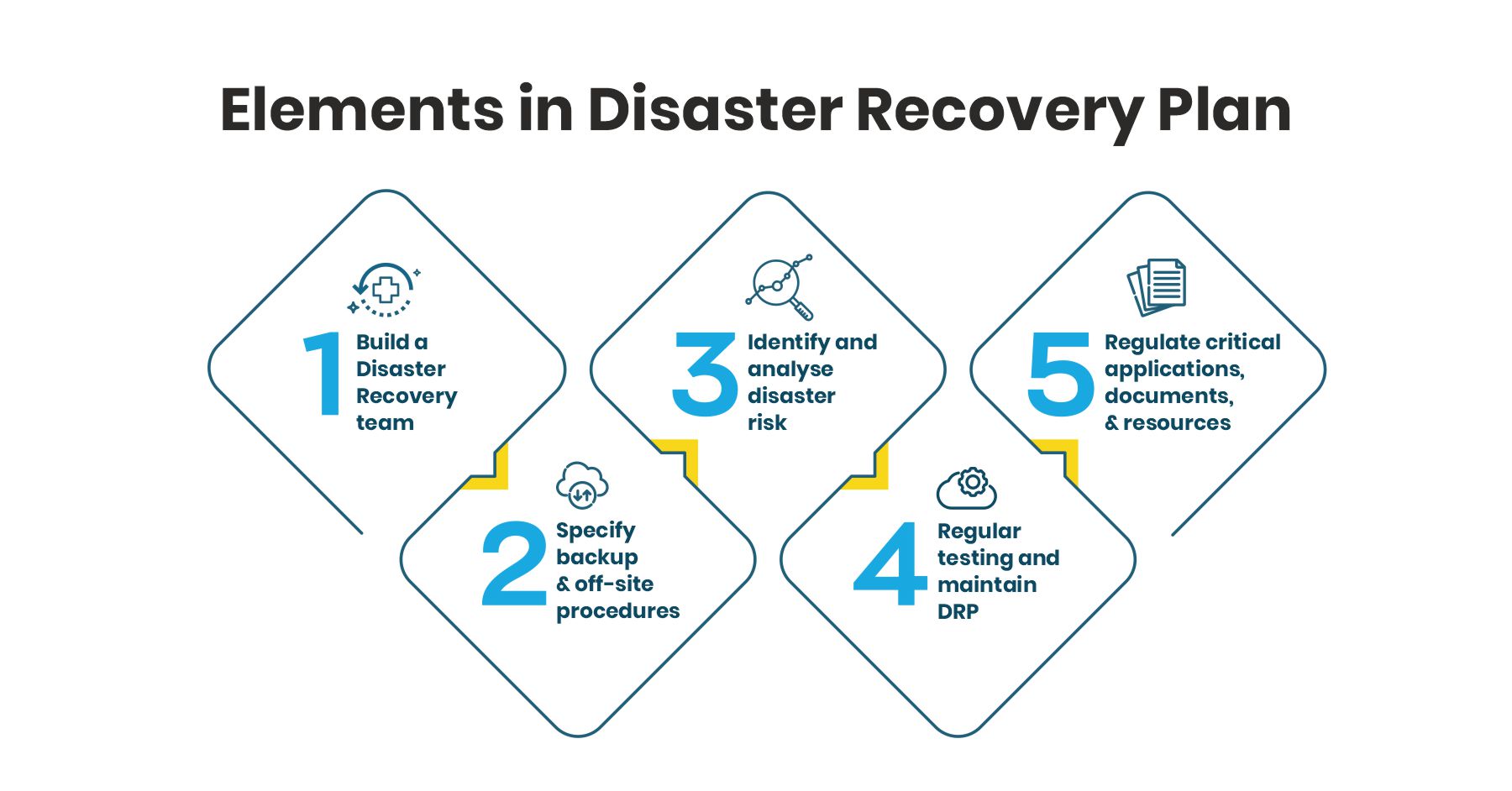Disaster Recovery as a Service (DRaaS) – Now, Future and Beyond

Disaster Recovery is an organization’s strategy for recovering access and functionality to its IT infrastructure after events like a natural disaster, cyber-attacks, or even business disruptions. An assortment of Disaster Recovery (DR) strategies can be important for a Disaster Recovery plan. DR is one part of Business Continuity and is also known as Disaster Recovery as a Service (DRaaS).
DRaaS, also known as Disaster Recovery as a Service, is the replication of facilitating of physical or virtual servers which provide failover in case of a man-made or natural calamity. DRaaS can be particularly helpful to organizations that come up short on the important ability to provision, design, and test an effective Disaster Recovery plan (DRP).
The global DRaaS market size is expected to grow from USD 5.1 billion in 2020 to USD 14.6 billion by 2025, at a Compound Annual Growth Rate (CAGR) of 23.3% during the forecast period.
According to a report, Cloud-based Disaster Recovery-as-a-Software (DRaaS) will be used by 59% of the organizations by 2021. Currently, 36% of the organizations use DRaaS, and a further 23% of the organization plan to add the technology by the coming year.
Disaster Recovery Plan
A Disaster Recovery (DR) plan is a conventional report made by an organization that contains definite instructions on the most proficient method to react to unplanned incidents like natural disasters, blackouts, cyber-attacks, and some other problematic events. The plan contains methodologies on limiting the impacts of a disaster, so an organization will keep on working – or rapidly continue key operations.

Disruptions can give rise to loss of income, brand damage, and disappointed clients. The longer the recovery time, the greater is the risk of the adverse business impact. In this way, a good disaster recovery plan should empower quick recovery from disruptions, notwithstanding the source of the disruption.
What should a disaster recovery plan include?
As organizations depend more on innovation and electronic information for their everyday activities, the amount of information and data innovation infrastructure lost to calamities gives off an impression of being expanding. Organizations are estimated to lose income and cause expenses each year because of disasters, unpreparedness, and lost profitability. Measures should be taken to shield your organization from disasters. The way organizations can protect themselves from disaster is by creating and implementing a Disaster Recovery plan (DRP).

1. Build a Disaster Recovery team
The team will be solely responsible for developing, implementing, and maintaining the Disaster Recovery Plan (DRP). A DRP should distinguish the team members, characterize every part’s obligations, and give their contact data. All employees should be educated and informed of the understanding about the DRP and their duty if a disaster happens.
2. Identify and analyse disaster risk
Your disaster recovery team should distinguish and evaluate the dangers to your organization. This progression should incorporate things identified with natural disasters, man-made crisis, and innovation-related incidents. This will help the team in recognizing the recovery techniques and resources needed to recover from disaster inside a predetermined and satisfactory time frame.
3. Regulate critical applications, documents, and resources
The organization should assess its business cycles to figure out which are critical to the tasks of the organization. The plan should focus on momentary survivability, for example, producing cash flow and revenues, instead of on long-term solutions of re-establishing the organization’s full working capacity. However, the organization should perceive that there are a few cycles that should not be postponed if possible. One example of a critical cycle is the preparation of payroll.
4. Specify backup and off-site procedures
These strategies should recognize what to back up, & by whom, how to perform the backup, area of backup, and how now and again backup should occur. Every single critical application, hardware, and documents should be backed up. Documents that you should think about backing up are the most recent financial reports, government forms, a current list of employees and their contact data, stock records, client and vendor listings. Critical supplies needed for everyday tasks, for example, checks and purchase orders, just as a copy of the DRP, should be put away at an off-site area.
5. Regular testing and maintain DRP
Disaster recovery planning is a nonstop interaction as risks of disasters and crises are continually evolving. It is suggested that the organizations should regularly test the DRP to evaluate the systems recorded in the arrangement for adequacy and appropriateness. The recovery team should routinely refresh the DRP to accommodate for changes in business processes, innovation, and developing disaster risks.
Steps in Disaster Recovery Planning

1. Assemble Plan
An organization should properly assemble a Disaster Recovery Plan for the betterment of the organization. Assembling the plan in a proper format would help the organization to protect the data and critical information to hit by any disaster.
2. Identify Scope
Disaster Recovery Plan should ensure that the data is kept safe and secured all the time. The best way of doing this is by using offsite data storage options like Data Center. For this planning, the scope should be identified properly.
3. Appoint Emergency Contacts
In case of any emergency or sudden disaster taking place, everyone should be aware of the emergency contacts appointed by the organization for the rescue. This would help the organization to take immediate actions and recover the data on time.
4. Recovery Team
The recovery team should be appointed in an organization, who would be responsible to recover the data and the crisis done by the incident. The roles and responsibilities of the recovery team should be well defined by the organization and should be trained well with the scope of the DR Plan.
5. Data & Backups Location
The locations of the Data & Backups should be defined by the recovery team so that the after-crisis recovery process is not affected and the recovery of the data is done well.
6. Testing and Maintenance
Routine test and maintenance is a part of the disaster planning process which will benefit the recovery process. Smooth testing of the recovery plan is much needed as it ensures performance.
Conclusion
To conclude with this, the modern era demands organizations to avail a proper Disaster Recovery Plan. As the technology is upgrading and data is being stored on the cloud the chances of cyber threat or any kind of disaster taking place is high. A detailed DR plan would help the recovery team and the organization streamlines and secure their data.

- Digital Transformation in Healthcare Sector - June 24, 2021
- ERP License and SaaS Cloud Subscription – Pros and Cons - June 21, 2021
- Disaster Recovery as a Service (DRaaS) – Now, Future and Beyond - March 15, 2021


